I have been playing with mesh in the open beta test of mesh import on the Second Life test grid for the past three weeks.
Here is a peasant tunic I have been working on. It is one piece, and it is the equivalent to 6 prims. I want to play now with a mesh underskirt to see if that will work well for me, or if I will use a flex prim underskirt as I have before under sculpties. I also want to make boots, and perhaps an apron to go with it.
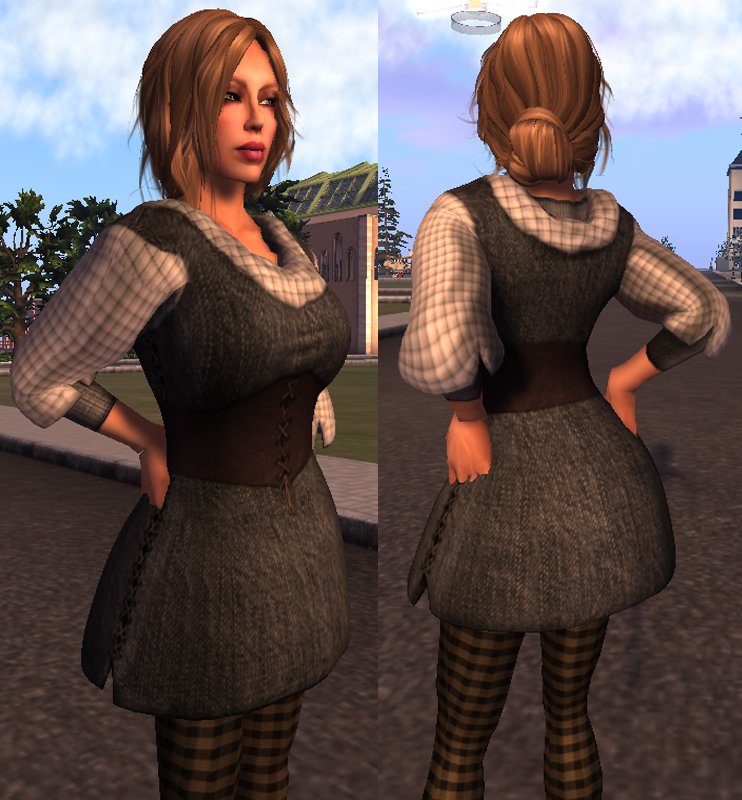
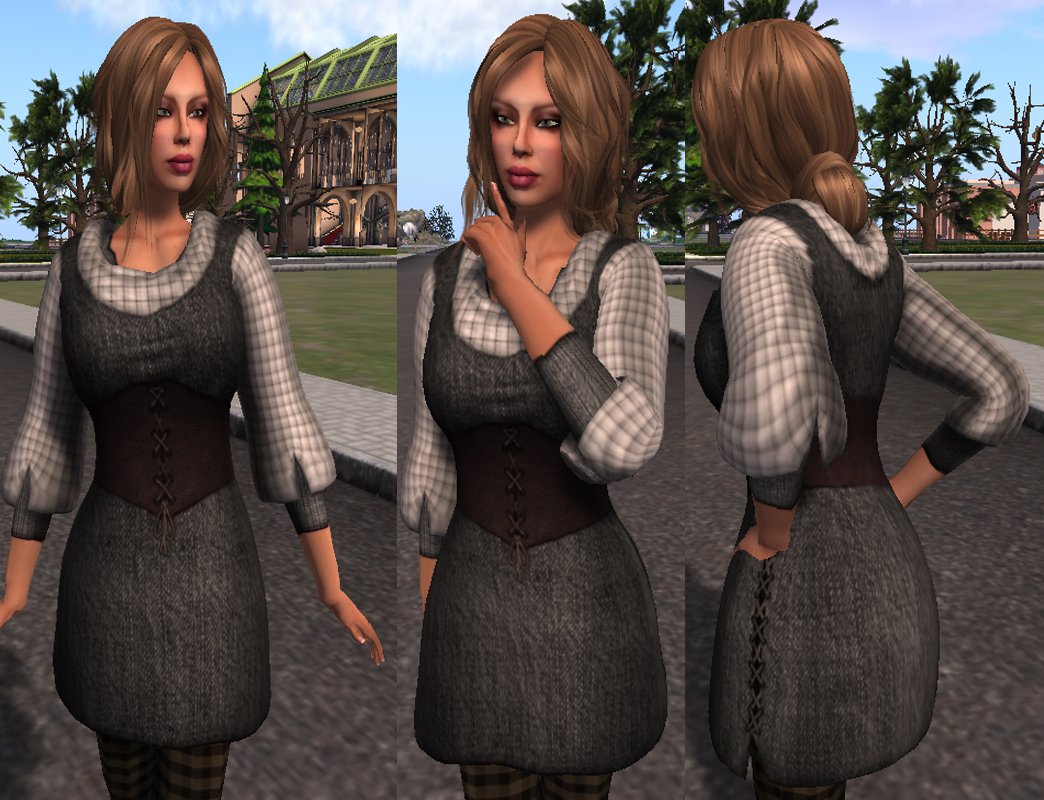
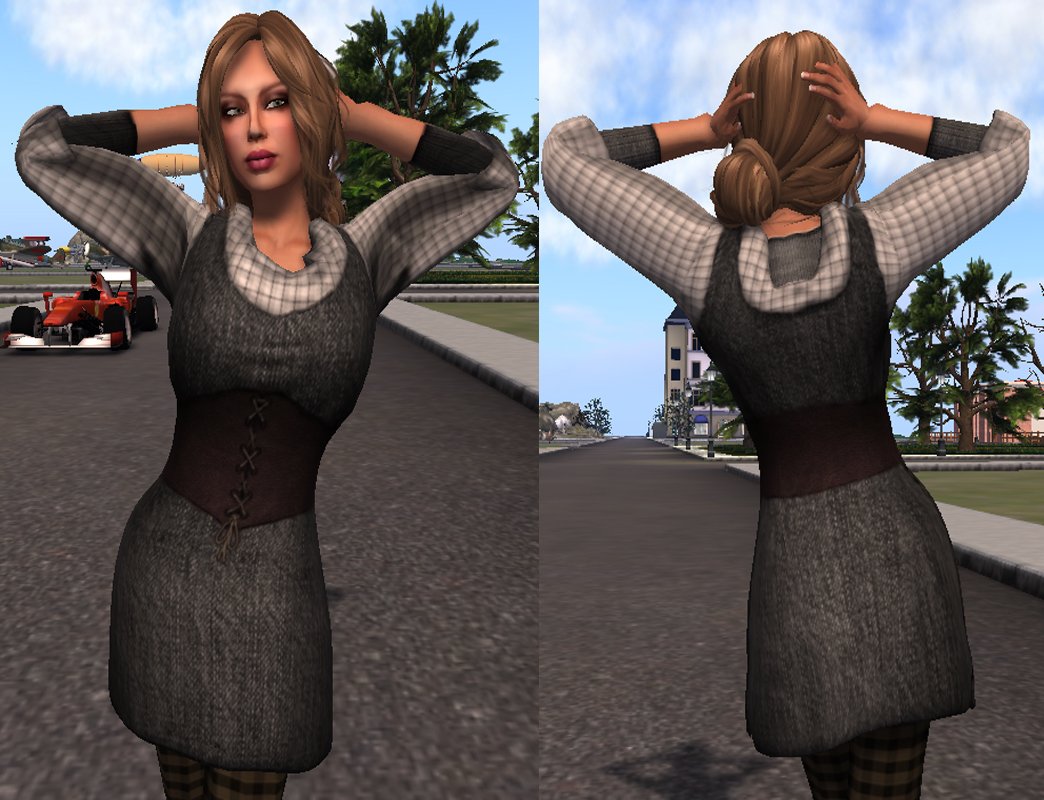
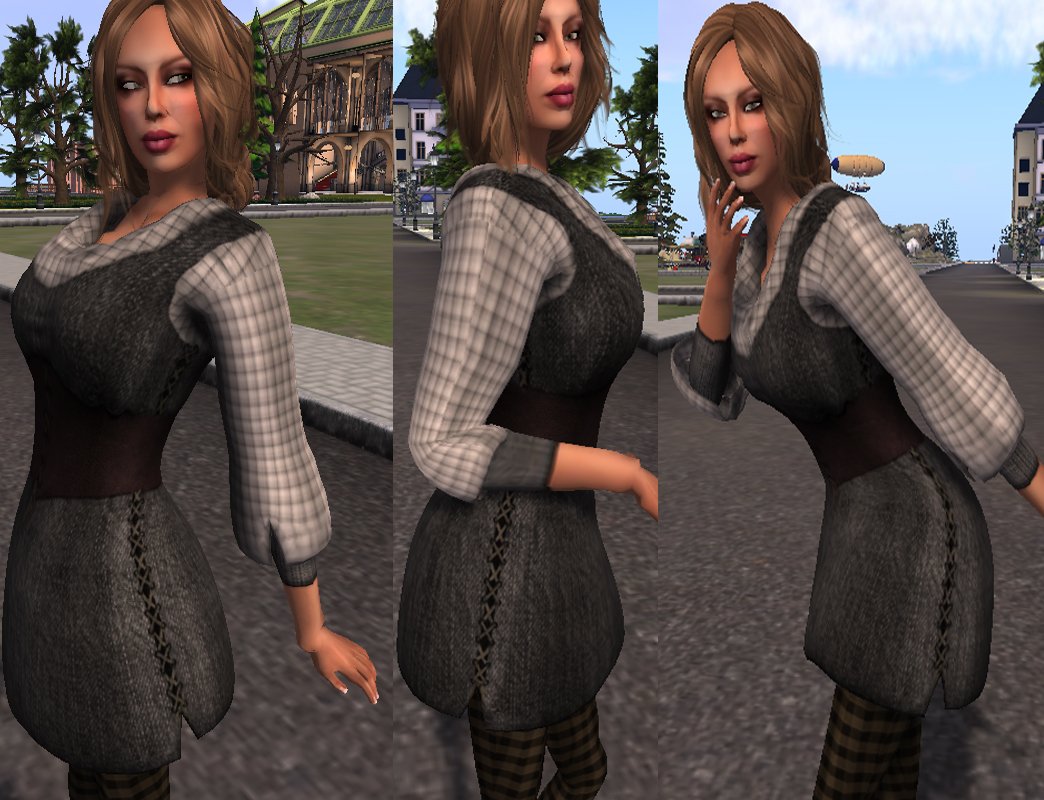
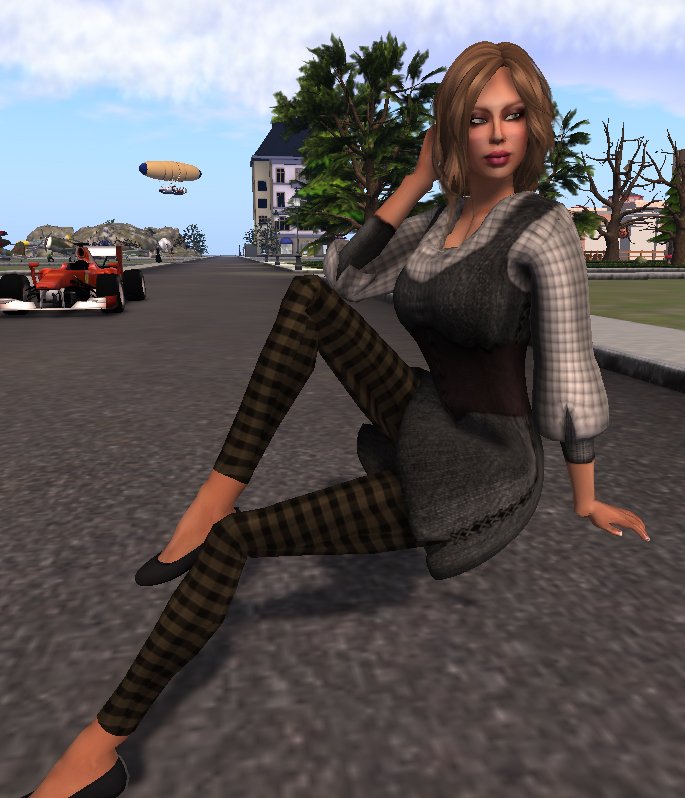
I had used ZBrush exclusively to make sculpties and came to love the ability of that program to handle fine detail and texturing. However, ZBrush will not export to collada, so I had to export as an .obj and import that .obj into Blender, which will export to collada. ZBrush does not handle rigging and weighting well at this point, so getting my clothing mesh to move with the avatar and weighting that movement must be done in another program. Blender does that quite well. Blender also handles UV maps much better than ZBrush.
All of this meant that I had to learn Blender. I have been working at that and also figuring out my process, my workflow or pipeline. Here is a very rough outline of what I have arrived at.
1. Make basic mesh in Blender. This permits me to rough out a very low poly form with perfect quads. I can extrude, select edge loops, add edge loops to areas where I want more detail, and so on.
2. Export basic mesh as an .obj and then import that into ZBrush. There I can subdivide the model to get good density to sculpt detail into and shape the mesh. Once I have done so, I move down to the lowest subdivision level and export that as an .obj.
3. Take the shaped mesh back into Blender as an .obj import. I then mark the seams where I want the UV map to be cut to make islands that will make sense to me. I unwrap the mesh and check out the UV map to make sure it is good. I then export the mesh again as an .obj, usually adding “UV mapped” to the name to avoid confusion.
4. Weight your mesh in Blender. At this point you can export the mesh as collada and set that aside, ready to take into Second Life.
5. Import the .obj UV mapped mesh back into ZBrush, and using the UV Master plugin I hit the “copy UVs” button. I then load up the subdivided mesh model I was working on and take the geometry down to the lowest level. I then open up the UV Master plug in again and hit the “paste UVs” button. This works very well!
6. Now I can texture it in ZBrush using that program’s fantastic tools at the highest subdivision level. When done, make a texture map from your polypaint, clone it, flip it vertically, and export it out.
7. Go into the test grid and import your collada model as weighted mesh and your texture. Put them together, and voila!












